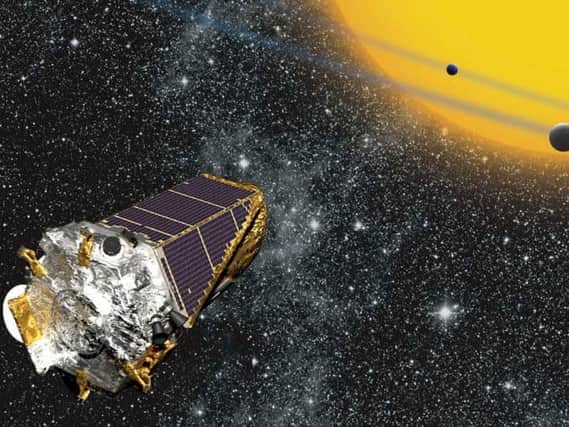Nearest habitable planet 'close' says Nasa


They said their Kepler space telescope had turned up nine more planets suitable for human habitation.
“If you ask yourself where is the next habitable planet likely to be, it’s within about 11 light-years, which is very close,” said Dr Natalie Batalha, Kepler mission scientist at Nasa’s Ames Research Center in California.
Advertisement
Hide AdAdvertisement
Hide AdThe hunt for aliens has come a long way from sci-fi speculation, with Kepler spinning through space, scanning the skies for new forms of life.
But it’s still slow progress. Kepler has verified 1,284 new planets, but scientists suggest that there could be more than 10 billion habitable planets in the Milky Way alone.
That makes good odds for the existence of cosmic cousins, but provides a daunting task of whittling them down.
Of the record 1,284 new planets, 550 are likely to be rocky, which is good in a universe filled with gassy giants.
Advertisement
Hide AdAdvertisement
Hide AdBut nine orbit their stars in “Goldilocks zones” where liquid water could potentially exist. Where there is water, there could be life.
Kepler uses statistical analysis to winnow the possible matches from the bulk data.
Most of the planets discovered by Kepler fall into the categories of super-Earth (1.2-1.9 times larger than the radius of Earth) and sub-Neptune (1.9-3.1 times larger), Dr Timothy Morton from Princeton University told the BBC.
“About 24 per cent of the stars harbor potentially habitable planets that are smaller than about 1.6 times the size of the Earth. That’s a number that we like because it’s below that size that we estimate planets are likely to be rocky,” said Dr Natalie Batalha, Kepler mission scientist at Nasa’s Ames Research Center in California.
Advertisement
Hide AdAdvertisement
Hide Ad“They say not to count our chickens before they’re hatched, but that’s exactly what these results allow us to do based on probabilities that each egg (candidate) will hatch into a chick (bona fide planet),” said Dr Batalha.
“This work will help Kepler reach its full potential by yielding a deeper understanding of the number of stars that harbor potentially habitable, Earth-size planets — a number that’s needed to design future missions to search for habitable environments and living worlds.”